Structural
Power,
and Human Rights Madison Powers
Visit to download the full and correct content document: https://ebookmass.com/product/structural-injustice-power-advantage-and-human-right s-madison-powers/
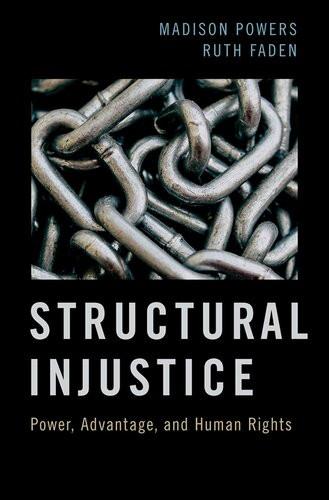
More products digital (pdf, epub, mobi) instant download maybe you interests ...
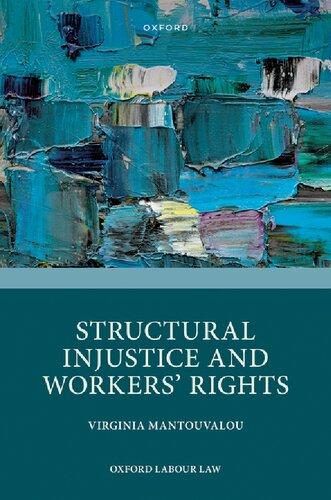
Structural Injustice and Workers' Rights Virginia Mantouvalou
https://ebookmass.com/product/structural-injustice-and-workersrights-virginia-mantouvalou/

Perpetuating Advantage. Mechanisms of Structural Injustice Robert E. Goodin
https://ebookmass.com/product/perpetuating-advantage-mechanismsof-structural-injustice-robert-e-goodin/

Jimmy and Rosalynn Carter: Power and Human Rights, 1975-2020 E. Stanly Godbold
https://ebookmass.com/product/jimmy-and-rosalynn-carter-powerand-human-rights-1975-2020-e-stanly-godbold/
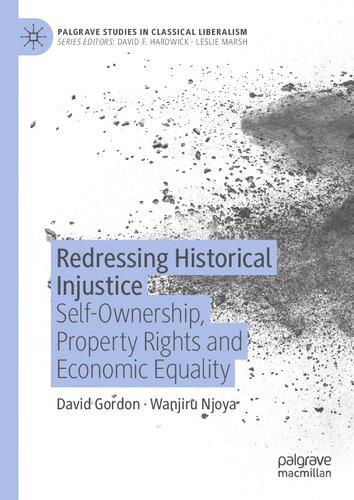
Redressing Historical Injustice: Self-Ownership, Property Rights and Economic Equality David Gordon
https://ebookmass.com/product/redressing-historical-injusticeself-ownership-property-rights-and-economic-equality-davidgordon/
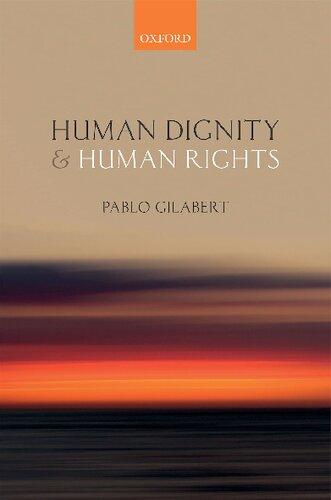
Human Dignity and Human Rights Pablo Gilabert
https://ebookmass.com/product/human-dignity-and-human-rightspablo-gilabert/

Indonesian Civil Society and Human Rights Advocacy in ASEAN: Power and Normative Struggles 1st Edition Randy W. Nandyatama
https://ebookmass.com/product/indonesian-civil-society-and-humanrights-advocacy-in-asean-power-and-normative-struggles-1stedition-randy-w-nandyatama/
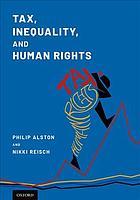
Tax, inequality, and human rights Alston
https://ebookmass.com/product/tax-inequality-and-human-rightsalston/

Sovereign Debt and Human Rights Ilias Bantekas
https://ebookmass.com/product/sovereign-debt-and-human-rightsilias-bantekas/

Artificial Intelligence, Social Harms and Human Rights Aleš Završnik
https://ebookmass.com/product/artificial-intelligence-socialharms-and-human-rights-ales-zavrsnik/

Structural Injustice
Structural Injustice Power, Advantage, and Human Rights
Madison Powers and Ruth Faden
Oxford University Press is a department of the University of Oxford. It furthers the University’s objective of excellence in research, scholarship, and education by publishing worldwide. Oxford is a registered trade mark of Oxford University Press in the UK and certain other countries.
Published in the United States of America by Oxford University Press 198 Madison Avenue, New York, NY 10016, United States of America.
© Oxford University Press 2019
All rights reserved. No part of this publication may be reproduced, stored in a retrieval system, or transmitted, in any form or by any means, without the prior permission in writing of Oxford University Press, or as expressly permitted by law, by license, or under terms agreed with the appropriate reproduction rights organization. Inquiries concerning reproduction outside the scope of the above should be sent to the Rights Department, Oxford University Press, at the address above.
You must not circulate this work in any other form and you must impose this same condition on any acquirer.
Library of Congress Cataloging-in-Publication Data
Names: Powers, Madison, author. | Faden, Ruth, author.
Title: Structural injustice : power, advantage, and human rights / Madison Powers.
Description: New York : Oxford University Press, 2019. | Includes bibliographical references and index.
Identifiers: LCCN 2018057225 (print) | LCCN 2019980504 (ebook) | ISBN 9780190053987 (cloth : alk. paper) | ISBN 9780190054014 (ebook)
Subjects: LCSH: Social justice. | Power (Social sciences) | Human rights. Classification: LCC HM671 .P684 2019 (print) | LCC HM671 (ebook) | DDC 303.3/72—dc23
LC record available at https://lccn.loc.gov/2018057225
LC ebook record available at https://lccn.loc.gov/2019980504
9 8 7 6 5 4 3 2 1
Printed by Integrated Books International, United States of America
For Penn and Tom
CONTENTS
Preface and Readers’ Guide xiii
CHAPTER 1 Introduction 1
1.1. Structural Injustice 1
1.1.1. The World as We Find It 2
1.1.2. Theoretical Integration of Human Rights Violations and Structural Injustice 3
1.1.3. Structural Injustice within and across States 3
1.1.4. Insights from Social Movements 5
1.1.5. When States Cannot or Will Not Respond to Structural Injustice 6
1.2. Plan of the Chapters 7
CHAPTER 2 Well-Being 13
2.1. The Place of Well-Being in Our Theory 15
2.2. The Socratic and Structural Dependence Arguments 20
2.2.1. Socratic Reflection 22
2.2.2. Caveats and Clarifications to Our Method of Socratic Reflection 23
2.2.3. The Structural Dependence Argument 26
2.3. The Core Elements 27
2.3.1. Health 28
2.3.2. Knowledge and Understanding 29
2.3.3. Personal Security 31
2.3.4. Equal Respect 33
2.3.5. Personal Attachments 37
2.3.6. Self-Determination 38
2.4. A Decent Human Life 42
2.5. An Alternative to Universal Endorsement Approaches to Justification 44
2.5.1. Empirical Approaches and Minimalist Conclusions 46
2.5.2. Interpretative Approaches 48
2.5.3. What a Justification for a Theory of Structural Justice Should Seek to Achieve 50
2.6. Three Implications of the Roles of Our Conception of Well-Being 53
2.6.1. Deprivation in Well-Being Is Not the Unique Concern of Justice: What Is Distinctive About Our Theory? 53
2.6.2. How Does Our Structural Justice Theory Deal with Deprivation Not Caused by the Social Structure? 55
2.6.3. How Does the Connection Between Our Conception of Well-Being and Human Rights Differ from Its Connection to Unfairness Norms? 56
CHAPTER 3 What Justice Is 57
3.1. Moral Importance and Stringency 59
3.2. Claimability and Specificity 63
3.2.1. Pre-Institutional Benchmark of Existence or Pragmatic Normative Innovation? 66
3.2.2. Specificity and the Problem of Multiple Realizability 69
3.3. Rightful Enforceability 71
3.3.1. The Legacies of Mill and Locke 72
3.3.2. Taking Stock 74
3.4. Unfairness Norms 75
3.4.1. Intuitive Cases 77
3.4.2. From Subterranean Layers to Wider Social Contexts 79
3.4.3. The Place of Unfair Power Relations within Our Theory 81
3.4.4. Common Assumptions in Fairness and Human Rights Claims 83
CHAPTER 4 What Structural Injustice Is 85
4.1. Significant Impacts, Structural Components, and Social Groups 87
4.2. Social Structural Components and Their Systematic Influence 92
4.2.1. Defining Characteristics of Unjust Structural Influences 92
4.2.2. Institutional Structures 97
4.2.3. Informal Structural Influences 98
4.2.4. Institutional and Informal Influences Combined 100
4.3. Power, Advantage, and Social Position 101
4.3.1. Relative Position within Relations of Production 102
4.3.2. Race 104
4.3.3. Gender 105
4.3.4. The Importance of Groups and of Intersectional Group Memberships 107
4.4. Background Assumptions 108
4.4.1. Moderate Scarcity and Human Rights Fulfillment 108
4.4.2. Closed Economic Systems 109
4.4.3. Free and Equal Citizenship 111
4.4.4. The Emergence of Injustice 113
CHAPTER 5 Well-Being and Human Rights 116
5.1. The Function of Rights 117
5.1.1. The Central Thesis of Interest Theories 117
5.1.2. The Challenge from Control Theories 119
5.2. Dignity and Well-Being Interests 124
5.2.1. The Moral Status Question 124
5.2.2. What Rights We Have 125
5.3. The Social Functions of Human Rights 128
5.4. Institutional Counterpart Duties and General Responsibilities: A Pragmatic Approach 132
5.4.1. The Recipient Orientation Objection: First Steps 132
5.4.2. Taking Stock 135
5.4.3. Specification of Institutional Counterpart Duties: The Holistic Assessment Argument 136
5.4.4. Responsibilities Beyond Counterpart Duties: The Linked Chain Argument 141
CHAPTER 6 The Responsibility of States 146
6.1. The Normative Uniqueness of State Agency and Its Implications 148
6.1.1. Institutional Capacity 149
6.1.2. Political Legitimacy 151
6.1.3. Gaps in Responsibility for Human Rights and the Principle of Moral Equal Protection 153
6.2. The Strong Statist Challenge 155
6.2.1. Normative Uniqueness Arguments 157
6.2.2. The Common Structure of Strong Statist Arguments 160
6.3. National Self-Determination Arguments 162
6.4. The Principle of Interstate Reciprocity 167
6.4.1. Reciprocity and Fairness 169
6.4.2. Double Standards in Agricultural Trade Policy and Climate Change 172
6.4.3. Conclusion 176
6.5. The Power of Non-State Institutions in the Current Global Order 177
6.6. Conclusion 185
CHAPTER 7 Real-World Examples 187
7.1. National Sacrifice Zones: From Appalachia to Warren County 188
7.1.1. The Legacy of Appalachia 190
7.1.2. Repeatable Patterns 194
7.2. The Globalization of Sacrifice Zones 196
7.2.1. The Natural Resource Curse 197
7.2.2. Do the Benefits Offset the Burdens? 199
7.2.3. The New Natural Resource Curse 202
7.2.4. Global Dumping and Outsourcing: Toxics and Trash 204
7.3. Segregated Cities: “Two Societies, . . . Separate and Unequal” 206
7.3.1. The Modern Origins of Segregated Residential Housing Patterns 208
7.3.2. Geographic Dispersion and Reconcentration of Poverty: 2000 to the Present 210
7.3.3. The Poor (Neighborhoods) Pay More (and Get Less) 214
7.3.4. Policing 216
7.4. Urban “Slums”: The Proliferation of Informal Human Settlements 220
7.4.1. Urbanization and the Urbanization of Poverty 220
7.4.2. Definitions and Characteristics of Slums 222
7.4.3. The Informal Economy 226
7.4.4. Multidimensional Deprivation 229
7.4.5. Power and Deprivation 230
7.5. Conclusion 232
CHAPTER 8 Resistance to Injustice: Activism and Social Movements 234
8.1. Individual Responsibility in a Nearly Just Society 236
8.2. Means and Goals of Resistance in Less Ideal Circumstances 238
8.2.1. Organizational Insights from the Ethics of Armed Conflict 240
8.2.2. Naming and Shaming 242
8.2.3. Boycotts and Divestment Campaigns 243
8.2.4. Blockades, Data Hacks, and Other Violations of Law 248
8.2.5. Self-Defense and Defense of Others 251
8.3. Targets of Resistance: Contributors and Beneficiaries 253
8.3.1. The “All or None” Objection 254
8.3.2. Two Tiers of Targeting Considerations 255
8.3.3. First-Tier Considerations 256
8.3.4. Second-Tier Considerations 259
8.3.5. Passive Complicity in Injustices by Others 259
8.3.6. Anti-Democratic Conduct 261
8.3.7. Anti-Competitive Conduct 262
8.3.8. Accountability Avoidance 264
8.3.9. A Cautionary Note 266
8.4. Conclusion: Well-Being and Social Movements 267 Bibliography 271 Index 293
PREFACE AND READERS’ GUIDE
This book has its roots in an invitation from the University of Zurich to participate in a two-day conference on our book Social Justice: The Moral Foundations of Public Health and Health Policy. It was held in 2012 and hosted by the Institute of Biomedical Ethics and the University Research Priority Program for Ethics. The conference featured two dozen speakers and commentators, representing a mix of academics and activists from eleven countries. This volume is the result of our expansion and refinement of the ideas in Social Justice that so excited this group, and in turn excited us.
For readers familiar with Social Justice, we note several ways in which our thinking has evolved. In order to ward off a variety of potential misinterpretations, where we once spoke of “essential dimensions” of well-being we now use the less problematic phrase “core elements.” The earlier book was structured around the positive and negative aims of justice, where the positive aim is to secure a basic level of well-being and the negative aim is to prevent or combat densely woven, unfair patterns of disadvantage. In a series of exploratory papers in the intervening years, we referred to the theory’s twin aims. Ultimately, in Structural Injustice, we opted for a twin focus on human rights and fairness norms.
We devoted a very brief section of Social Justice to how our conception of well-being might be used to ground an interest theory of human rights. This book picks up on that suggestion and uses our conception of wellbeing to defend such a theory. We also establish extensive links between human rights norms and structural fairness norms.
Our thinking about fairness norms has evolved considerably since Social Justice. In that book, we used the phrase “systematic disadvantage”
to encompass a plurality of ways in which unfair patterns of advantage become cemented into place. We left open the possibility that unfair patterns of advantage emerge from the unintended, largely benign, uncoordinated actions of individuals and institutions, while also devoting attention to morally more complex patterns of interaction involving unfairness in relations of power. In this book, we focus on the latter trajectory. We now place greater emphasis on the inherent unfairness of certain power relations, and we highlight the instrumental role asymmetric power routinely plays in creating and sustaining deep disadvantage.
In Social Justice, we claimed applicability of our theory to both domestic and global contexts. Since that book went to press in 2005, much has been written on this topic. It has required us to address powerful arguments against the global extension of the fairness norms we propose. In Structural Injustice we draw a careful distinction between the norms we defend and the kinds of norms of justice that critics and some proponents have in mind when they argue for or against global application of norms of justice.
Finally, although we developed our theory in Social Justice in conversation with specific issues in public health and health policy, we indicated that we believed our theory was not limited to health. In fact, we rejected the general thesis that social justice fundamentally differs in its requirements in “separate spheres,” along with the assumption that matters of structural justice could be addressed adequately in one sphere in isolation from injustices in other sectors of social life. In this book, we make good on these claims by putting forward a theory of structural injustice that is intentionally freed from a special focus on health and that continues to emphasize the interconnected and interdependent relations between different core elements of well-being and different kinds of structural unfairness.
There are also two features of Structural Injustice that were not present in our earlier volume and that we want to note for all readers. First, many of the chapters are accessible as stand-alone discussions of interest to audiences with various levels of prior exposure to the justice literature. Although the book is designed as a sequence of chapters through which we develop our overall theory of structural injustice, distinguish it from existing alternatives, demonstrate its relevance within different nationstates and across national boundaries, and defend the justifiability of forms of resistance, many chapters are also written so that they can be read on their own. For example, a reader interested in what makes norms of justice different from other moral norms can read chapter 3, or a reader interested in debates about the foundations of human rights can read chapter 5. Both
provide surveys of the central issues in key debates, even though the ultimate purpose of each chapter is to take sides on some hotly contested points that are central to our theory. Chapter 4 offers a useful place for diving into contemporary debates about structural injustice, including controversies pertaining to the moral significance of membership in social groups such as those defined by race, gender, or economic class. Chapter 6 provides a self-contained discussion of the nature, rationale, and limits of nation-state responsibility for addressing human rights claims in tandem with the underlying structural conditions that make their violation more likely.
Second, certain parts of the book are intended to be particularly relevant and accessible to readers who do not have a background in philosophy but who have expertise in mitigating and preventing structural injustices on the ground, including participants in social movements, investigative journalists, and staff at non-governmental organizations (NGOs), philanthropic institutions, government agencies, and international organizations. Our selection of focal readings recommended for these readers is more complicated, given the range of backgrounds and interests of the intended audience. For example, some readers might come to the book with a practical understanding of human rights and the role they play in global discourse, but they may have a less firm grasp of what is distinctive about fairness norms, or they may have given less thought to how fairness norms and human rights are intertwined in real-world scenarios. Other readers may have questions about how to frame the moral issues arising in situations in which human rights, on their own, seem inadequate or fail to capture some aspects of what is morally problematic. For all of these readers, we suggest starting with section 2.1 for an explanation of how fairness norms and human rights interact, followed by 3.4, which provides a broadly accessible, but more detailed introduction to notions of unfairness.
Section 1.1, together with chapter 2, provides a basic understanding of our overall theory and how it differs from other structural theories of justice that may be familiar already, at least in broad outlines, to a diverse array of journalists, activists, NGO staff members, philanthropies, government agencies, and international organizations. Chapter 4 discusses the question of what makes a theory of justice a structural theory. Even though we intend the chapter to engage specialist audiences on highly contested issues of contemporary importance in the philosophical literature, we think that the general idea of structural injustice is so much a part of political conversations today that many readers will find rewarding the extra effort
required to work through the main lines of argument. For example, issues of how race, gender, and economic class intersect, and how the relative social position of members of each social group shapes their daily experience and life prospects, are central concerns in popular feminist literature, labor activist circles, and social movements such as Black Lives Matter.
Readers working on issues of global economic justice are likely to find relevant the discussion in chapter 6.5, where we provide a moral framework for engaging in debates about state sovereignty, the global power of multinational corporations, and the role of supranational institutions such as the World Bank, International Monetary Fund, and World Trade Organization. Readers with an interest in environmental justice may want to read sections 7.1 and 7.2 for their discussions of the commonalities of sacrifice zones from Appalachia to Zambia. Readers with a focal interest in many of the issues posed by the Black Lives Matter movement should find much of interest in 7.3, and global slum activists and students of global development should find 7.4 of special interest.
A range of readers may find the general discussion of the ethics of resistance in chapter 8 of particular value. Since “resistance” is so much a part of the vernacular of contemporary social movements, we hope that this discussion offers a framework useful for generating more extensive conversations about its ethical dimensions. As it turns out, the philosophical literature is quite sparse, while the public discussion of efficacious strategy and tactics is saturated with moral concerns about what actions are appropriate when ordinary channels of reform appear blocked by those at the center of concentrations of power and advantage.
We close these brief remarks by expressing our indebtedness to the many colleagues, students, and postdoctoral fellows who read successive iterations of chapter drafts or who participated in seminars in which we presented our evolving thinking over the years. Thank you for helping us mature our theory. Without your input, Structural Injustice would not be the book it is.
Structural Injustice
1.1. Structural Injustice
Structural injustice is an increasingly popular topic in the philosophical literature and a tragic state of affairs for millions of people. For these people and for social activists, investigative journalists, and non-governmental organizations (NGOs) that advocate for them, structural injustice is much more than an abstract concept. It is a defining feature of the institutional arrangements and web of social norms in which they live. Desperate poverty, human trafficking, police misconduct, institutional racism, exclusionary gender norms, environmental sacrifice zones, international trade rules, voter suppression tactics, sweatshop labor, and global land grabs are all too familiar examples.
Our book is fundamentally philosophical, but it is also responsive to and inspired by structural injustices in the here and now. We put forward a theory that captures the central injustices of large-scale forms of social organization, both within and across national boundaries. These injustices take the form of unfair patterns of advantage and unfair relations of power, including subordination, exploitation, and social exclusion, as well as human rights violations and deprivations in well-being that contribute to and grow out of unjust social structural conditions. In our theory, human rights violations, disadvantage, and unfair power relations interact and are mutually reinforcing. They are both cause and effect of each other. Together, they are the hallmark of serious structural injustices that typically implicate multiple institutions and agents having differing degrees of culpability for the wrong that results. In many cases, these are the kinds of injustices that motivate, and also justify, social movements of resistance. Five features of this book distinguish our approach from many other accounts of structural injustice. First, our account is designed for the
world as we find it. It is built to fit a real-world characterization of deprivation, human rights violations, disadvantage, and unfair power relations. Second, we defend an integrated theory of structural injustice in which human rights violations and structural unfairness are routinely intertwined in both their origin and their solution. Third, our theory addresses what we view as basic or fundamental injustices that arise both within and across national boundaries. Fourth, we provide a novel response to criticisms about the universal applicability of theories like ours that rely on an account of human well-being. Like so much of our thinking, our response is informed by and responsive to critical perspectives found in social justice movements. To that end, we devote substantial space to four extended examples that illustrate our theory. Fifth, the primary practical aims of the theory are different from those of other accounts. We offer guidance for conditions that are all too commonplace where states (and other institutional agents) cannot or will not protect basic well-being interests or create fair patterns of advantage and fair relations of power.
1.1.1. The World as We Find It
We differ from John Rawls, Iris Young, and other prominent theorists in the way we characterize the social structural phenomena of central interest. Rawls’s distributive principles are designed for a “nearly just” society. His focus is on the threats that deep social class differences pose to an ideal of socioeconomic fairness in circumstances of moderate scarcity, where basic needs and basic liberties are already secured. The social structural phenomena of interest to us, however, are quite different. Our theory is concerned with structural injustices that take a more complex and malignant form but that are routine in the world as we know it. These injustices are characterized by deep pockets of multidimensional deprivation and entrenched disadvantage, born of power differentials across social groups. They are injustices in which millions have unmet basic needs and no secure liberties, and human rights violations, including violations of equal standing based on characteristics like race and gender, are commonplace. As a consequence, relationships grounded in exploitation or social exclusion are easily created and sustained.
Like us, Young rejects the idealizing assumptions in Rawls’s theory, and so our work shares much more common territory with her than with Rawls. However, in her later work Young distinguishes sharply between classic instances of intentional oppression and structural injustices that are
the cumulative effect of multiple, uncoordinated, morally benign decisions of diverse agents. While we do not claim that structural injustices can never emerge in this way, we think they seldom do. Instead, we focus on patterns of structural injustice that are fundamentally different in origin and in the underlying social processes in which these injustices are produced and sustained. In circumstances ranging from institutional racism to the global dumping of hazardous waste, our diagnosis of the structural origins and systematic consequences of unfair structural conditions and human rights violations reveals a mix of agents and motivations that is very different from Young’s perspective.
1.1.2. Theoretical Integration of Human Rights Violations and Structural Injustice
Unlike most theorists who have written about structural injustice, we make a theoretical case that human rights violations and unfair social arrangements should be analyzed as intertwined in one theory of structural injustice.
Some, like Rawls, presuppose the satisfaction of human rights as lexically prior to his principles of fairness, whereas others often describe structural injustices as constituting human rights violations. Some theorists argue that various issues that are typically understood as human rights violations should instead be analyzed primarily as systematic injustices, while others highlight reasons for drawing a sharp distinction between the kinds of problems that should be addressed by human rights norms and those that should be addressed by norms regulating structural unfairness. By contrast, we argue that human rights violations and structural unfairness are inseparably connected in ordinary contexts and belong in one theory of structural injustice. We use our integrated theory to defend the novel view that states’ fulfillment of human rights responsibilities— not only their duties to citizens, but also in some cases to non- nationals— requires simultaneous attention to combating and preventing the onset of conditions of serious structural unfairness.
1.1.3. Structural Injustice within and across States
We also argue that considerations of structural justice constrain nations from taking actions that create and sustain conditions that erode the ability of other states to fulfill their duties to uphold the human rights of those
within their territorial jurisdictions. The practical standpoint from which our theory proceeds thus differs from that of many other approaches because of the kinds of questions we pursue. For example, unlike John Rawls, we do not propose a set of principles that are meant to be jointly sufficient for the regulation of social relations in a single, self-contained, politically unified society. Nor do we propose a separate set of principles that would characterize a “reasonably just” global order. Instead, our theory is meant to apply to domestic and global contexts. Our theory, therefore, is neither a theory of domestic justice, or one meant solely for application in a particular political context, such as liberal democratic societies, nor a theory intended exclusively for the regulation of some aspect of global affairs, such as the relations between sovereign states. To put matters slightly differently, our theory focuses on the most basic, fundamental matters implicating the core elements of well-being characteristic of a decent human life. It does not attempt to specify further, potentially more demanding requirements of a fully just, liberal democratic society or a reasonably just global order.
Beyond the fact that the core well- being interests at stake are of universal moral importance, our theory is meant to apply both within and beyond national boundaries and to a diversity of national contexts, for three additional reasons. First, there are many parallels across state contexts in the way social relations, well-being outcomes, and overall life prospects are structured. Many of the relevant incentive structures, social dynamics, political preconditions, and interdependencies that characterize the most pernicious forms of structural injustice routinely exist in a variety of national contexts. In a nutshell, our structural theory emphasizes that what happens here, wherever here is, often happens elsewhere.
Second, although social structural factors that are closest to home are still the most relevant to the formation of structural injustices, globalization adds a new layer of structural influence. The reality of the current phase of globalization is that increasingly what happens here affects what happens elsewhere, and what happens elsewhere affects what happens here.
Third, in the new global order, state sovereignty, once both a threat to and a guarantor of human rights and fairness, has been eroded. A combination of politically unaccountable supranational institutions and increasingly powerful multinational corporations exacerbates the loss of ability of sovereign political institutions to chart their own course in economic development and social policy and secure human rights within their borders.
